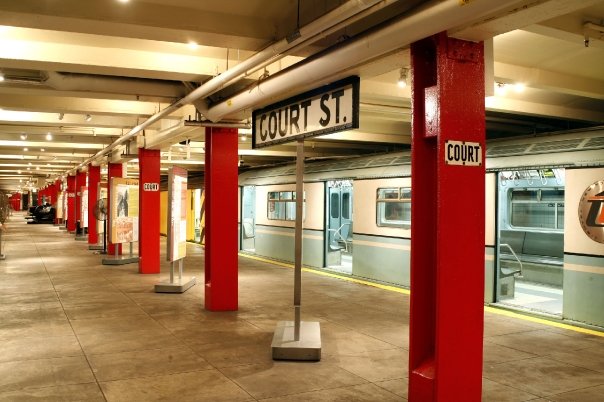
There is something nearly incongruous about Wi-Fi service in the New York City subway system. On the one hand, the visuals in many subway stations are not appealing as water-stained walls, strange odors and general disarray are common signs of aging infrastructure. On the other hand, the stainless steel rolling stock matches the backs of Apple’s popular iPads, and technology has become, in the minds of some, synonymous with progress.
So, enter Wi-Fi. As part of Transit Wireless’ slow-moving but supposedly steady rollout of cell service to underground New York City subway stations, Boingo will be providing Wi-Fi service as well, and this summer, thanks to Google, the access is free. Beginning this past Monday at the same six stations already wired for cell service, Google, via a promotion run by Google Offers, subsidized the Wi-Fi. For travelers in Chelsea at the 14th St. stations at 6th, 7th, and 8th Avenues as well as the stop at 23rd and 8th, free Wi-Fi can help while away the time spent waiting for a train.
Google’s offer runs through September 7. After that, and at others as they come online, Boingo will be charging an access fee. Is it worth it to pay to surf the Internet for four or six or ten minutes before the next train arrives? I doubt it, but that won’t stop some straphangers from ponying up the dough.
So what’s in it for Google? Why the free summer? The Awl late last week explored the economics of information as Google, thanks to its terms of usage, gets to track everyone’s subway-based browsing habits. Ad Week had a similarly interesting take and one that made me ponder the MTA’s own approach to subway advertising. Tim Peterson wrote on Boingo’s attempts at securing future sponsors for free service:
To better customize its offerings, Google is splicing NYC into three regions, so those WiFi freeloaders who elect to sign up for Offers at one of the SoHo hotspots will receive NYC Downtown offers. Those near Madison Square Garden will receive NYC Midtown offers. “Whether it’s finding a great deal for a new restaurant or an outdoor adventure, Google Offers is all about helping people make the most of their city, while saving money. With free WiFi in subway stations and Boingo hotzones across Manhattan, people can easily browse the Internet or discover great deals from nearby businesses while they’re on the go,” said a Google spokesperson.
The campaign is a brand-awareness play for Google, but Boingo is using it as a pilot to test out its sponsor-driven WiFi initiative. “The goal is, by time this runs out, to have another advertiser lined up,” said Christian Gunning, Boingo’s director of corporate communications. Subway riders in particular are a valuable demo for advertisers to target, he said, with more than 70 percent between the ages of 18 and 54 and more than 35 percent exceeding $75,000 in annual income.
In addition to the six subway stations participating in the Google Offers pilot, Boingo plans to add 30 more New York City hotspots by the end of the year and will be selling brands exclusive network-wide sponsorships, Gunning said.
Google, one of the nation’s more successful advertising agencies at this point in its corporate history, seems to think subway riders are “a valuable demo for advertisers to target.” They’re not wrong per se, but it’s a thought that isn’t expressed frequently. It’s certainly true that the MTA has been more aggressive in courting advertisers lately as a fully wrapped Shuttle and 6 train are both common. Plus, dynamic video ads outside stations have upped the ante as well.
Still, I can’t help but wonder about the ad rates when Dr. Zizmor, ASA and Monroe College feature so prominently throughout the system. Pulp novels still take out placards, and many stations feature no ads at all. Perhaps those one-offs maintain some of the lost charm of in-car subway advertising, but perhaps the folks selling the ads could shift focus a bit. If Google thinks we’re a valuable demographic for ads, someone with money to spend should too.





